- Purchasing a houseplant can add an element of decor to your home, but can also provide your space with health benefits.
- A few easy houseplants to maintain are snake plants, english ivy, and spider plants, among others.
- Most plants that are easy to maintain are those that are resilient in many light conditions and require minimal watering.
There’s no better way to freshen up a room than by adding some greenery. While plants definitely add an element of decor to a space, there are also many health benefits to having houseplants. They work to improve your home’s air quality, and may even boost your mood, workplace performance, and immunity, according to Healthline.
Many people may be initially intimidated by the idea of adopting a houseplant because they seem like a lot of work, but this isn’t always the case. There are many houseplants available that are easy to maintain and require minimal maintenance. Check out these 12 houseplants that can help you bring the outdoors inside and are relatively simple to keep alive:
Snake Plant
A snake plant, also known as mother-in-law’s tongue or ribbon plant (Sansevieria), is a popular houseplant that is low maintenance and easy to keep alive. A snake plant is a succulent plant that grows vertically and has thick, waxy leaves. A major benefit to a snake plant is how incredibly low maintenance and resilient they are.
They can be left alone for weeks at a time and still survive, making them ideal for those who tend to vacation often. LeafEnvy states that snake plants can survive in most types of lighting from low light to bright, direct sun. They require water sparingly and it’s recommended to allow the soil to dry completely between waterings to avoid root rot or overwatering. Snake plants should generally be watered once a month.
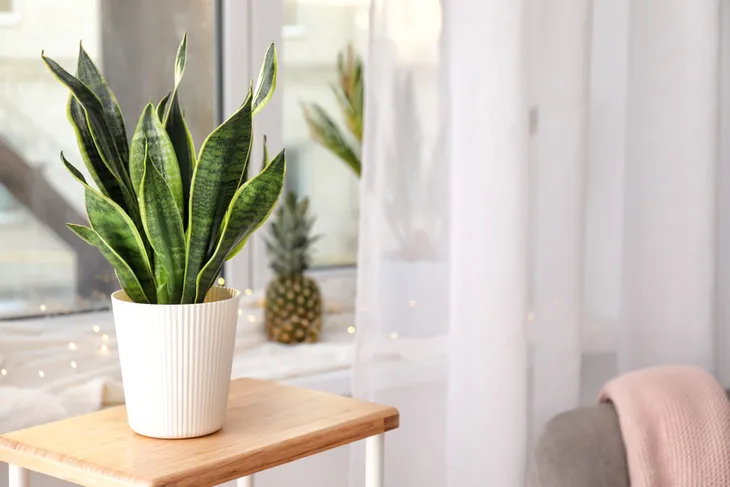 Shutterstock/Shadow Inspiration
Shutterstock/Shadow InspirationAloe Vera
Aloe vera is another houseplant that’s relatively simple to keep alive and maintain. While potted aloe looks nice, it also doubles as a helpful skincare tool. Aloe vera is known for its healing and soothing properties and is great to have available on hand.
GardeningKnowHow explains that aloe vera plants thrive the most when they are near bright light and love south or west-facing windows. Similar to snake plants, it’s recommended to allow the roots to dry completely before watering aloe vera plants. Generally speaking, plan to water your aloe vera plant every 2-3 weeks.
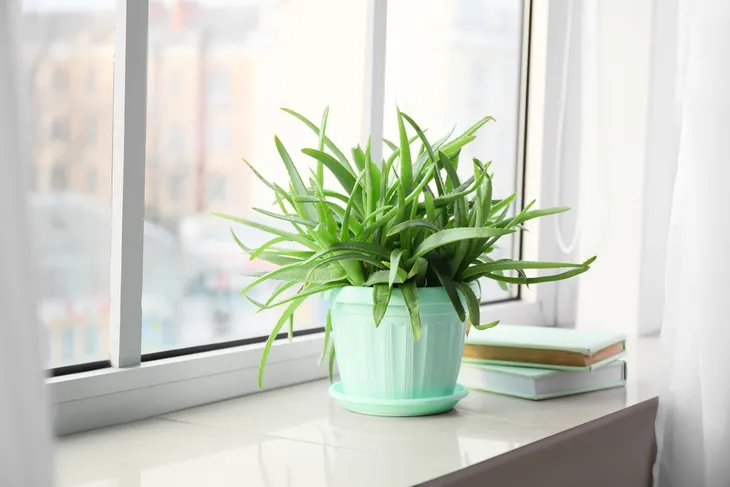 Shutterstock/Pixel-Shot
Shutterstock/Pixel-ShotEnglish Ivy
If you’re looking for a plant that has leaves that cascade, an english ivy might be a good fit for you. These plants look beautiful hanging in a basket or set on a shelf to allow the long tendrils of leaves to dangle. Aside from their beautiful aesthetic, english ivy also act as a powerful air filter and remove toxic agents from the air such as formaldehyde and benzene, according to Gardeners Path.
Caring for an english ivy plant tends to be quite simple. They love indirect light or weak direct light, and thrive near north or east-facing windows. English ivy plants should be watered once a week generally, but watering when the top layer of soil feels dry is another good rule of thumb.
 Shutterstock/ArtBackground
Shutterstock/ArtBackgroundPothos Plant
Another beautiful plant that has trailing vines is the pothos plant, also known as devil’s ivy. HGTV explains that the pothos plant is a member of the philodendron family and is a fast-growing plant with variegated leaves. Pothos come in a range of variations and the leaves can be speckled in shades of gold, cream, silver or white depending on the type.
In terms of care, the pothos plant does best in “bright, medium or low light and doesn’t mind drying out now and again,” according to horticulturalist Justin Hancock for Costa Farms. Since this plant is a vine, it can be hung from a basket, grown horizontally along a mantle or vertically up a pole or trellis.
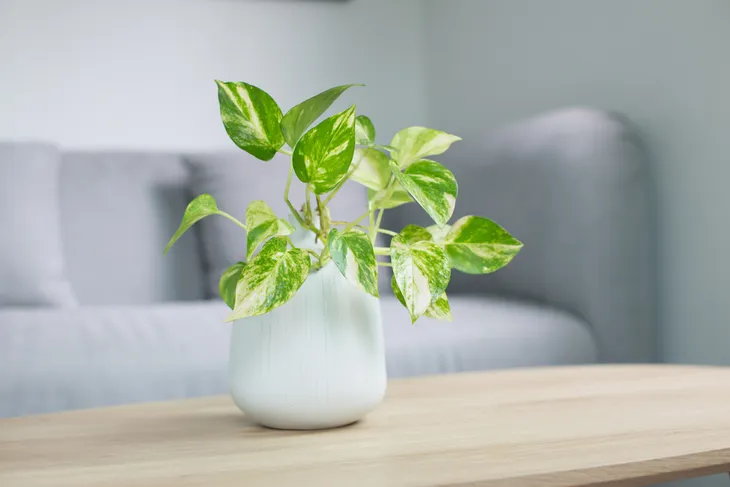 Shutterstock/Emily frost
Shutterstock/Emily frostSpider Plant
If you’re looking for a plant that is fast-growing, the spider plant might be a fit for your home. They’re simple to grow and create baby shoots called “pups” that can be repotted and planted elsewhere or given as gifts, according to Costa Farms. The pups look like tiny spiders, which is what gives the plant their name.
Spider plants thrive in bright spots, but can also grow in low and medium light too. One care tip with spider plants is to snip any dead leaves and keep a consistent watering schedule to ensure their roots can store moisture.
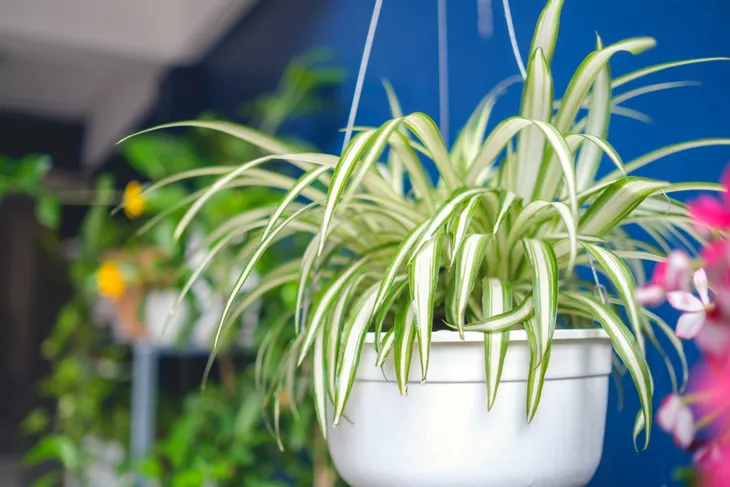 Shutterstock/Yaoinlove
Shutterstock/YaoinloveFiddle Leaf Fig
The fiddle-leaf fig (Ficus lyrata) is a popular houseplant option and has large, heavily veined leaves. According to The Spruce, fiddle leafs are fast growing plants and can grow to up to 6 ft tall. They are relatively low maintenance plants and can survive in many environments.
The ideal lighting for a fiddle leaf fig is bright, filtered light. It’s important to avoid overwatering this type of plant. Fiddle leaf figs should be watered once a week or every 10 days. It’s also recommended to turn your plant often to ensure that every area is getting enough sunlight. This will also ensure that your fiddle leaf fig does not grow to lean to one side towards the sun.
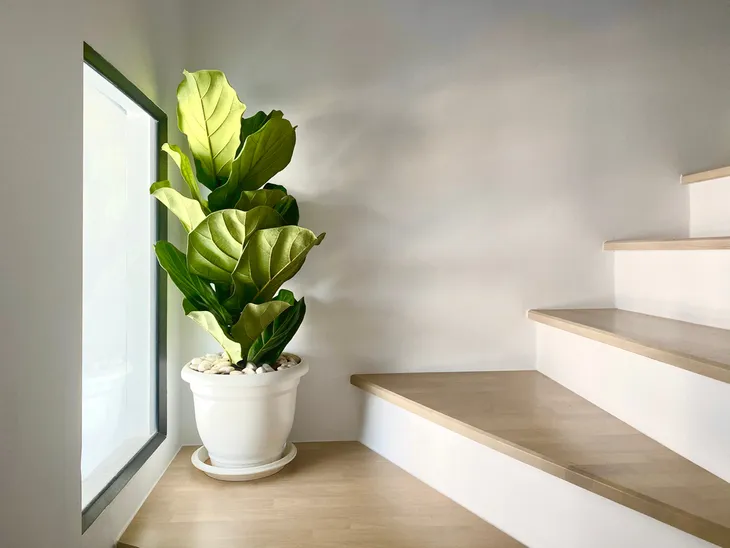 Shutterstock/Kowit Phatipreechakul
Shutterstock/Kowit PhatipreechakulJade Plant
A jade plant is super low maintenance which makes them perfect for your home or office spaces. A jade plant is part of the succulent family and features “fleshy, oval leaves and thick, woody stems that resemble tiny tree trunks,” according to The Spruce. They are slow-growing plants and only gain about 2 inches each year, but they can grow between 3 and 6-feet tall.
Jade plants are generally undemanding and only require water once a month or every three weeks. Their ideal sun conditions are bright, indirect sunlight. Keeping your jade plant near a west or south-facing window is ideal.
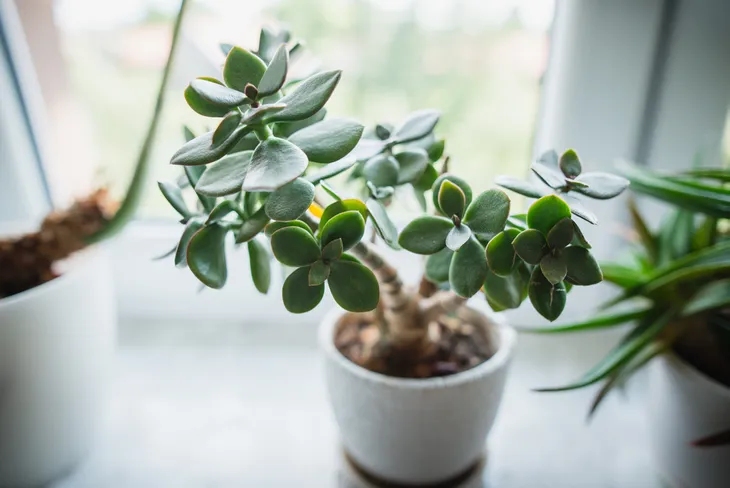 Shutterstock/Jus_Ol
Shutterstock/Jus_OlPeace Lily
Peace lilies, also known as Spathiphyllum, is a great houseplant option for those who prefer plants that flower. It has glossy green leaves and white flowers called spathes, according to Gardeners World. A peace lily is a great plant to fill a corner of a room and are also quite low maintenance to keep alive.
Peace lily plants thrive in a spot in your home that is bright, but still away from direct sunlight. According to HGTV, peace lily plants should be watered once a week. These plants also love to be misted with a spray bottle to increase humidity.
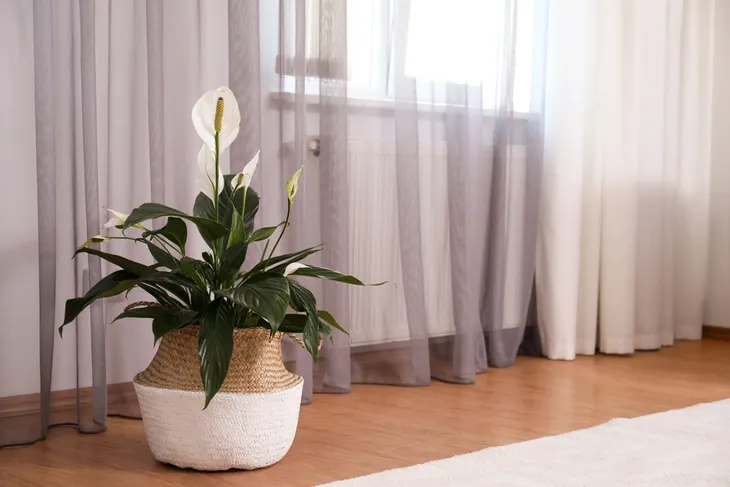 Shutterstock/New Africa
Shutterstock/New AfricaMoney Tree
The money tree makes for a great houseplant or office plant. It boasts a braided trunk and can grow up to eight-feet indoors, according to Good Housekeeping. The plant is supposed to be a symbol of good luck and prosperity, which makes it a great gift idea as well.
In terms of care, money trees love bright, indirect sunlight. It’s best to give your money tree a good watering every one to two weeks, an ensuring enough time in between to allow the soil to dry, according to The Sill.
 Shutterstock/Lifesummerlin
Shutterstock/LifesummerlinSwiss Cheese Plant
If you’re looking for a houseplant with a unique leaf pattern, you might enjoy the swiss cheese plant. Also known as the Monstera Deliciosa, this plant is native to Mexico and Central America. It’s a tropical plant that tends to give an exotic vibe since the leaves have unique holes in them.
When it comes to sun, these plants love bright, indirect sunlight. The frequency of watering for swiss cheese plants depends on how dry the soil is. Ideally, you should water your swiss cheese plant every two to four-weeks, according to experts at The Greenhouse People.
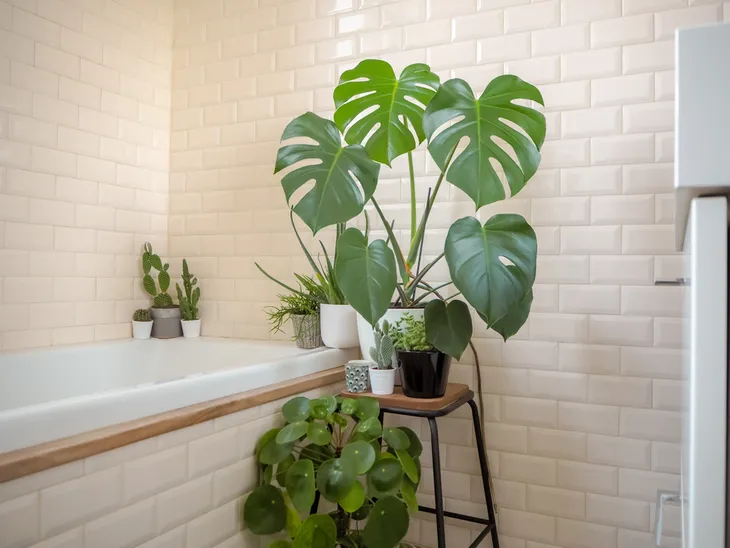 Shutterstock/Luoxi
Shutterstock/LuoxiZZ Plant
The ZZ plan, officially named Zamioculcas zamiifolia, is native to East Africa. It’s known as “the king of the indestructible plants” because it can tolerate the three most dangerous plant killers: dehydration, low light, and low humidity, according to Good Housekeeping. The one drawback with this plant is that it tends to grow quite slowly.
This plant has thick leaves with glossy shine and can thrive in nearly any light condition, whether low or bright. ZZ plants should be completely dry between watering, which typically takes between two to four-weeks.
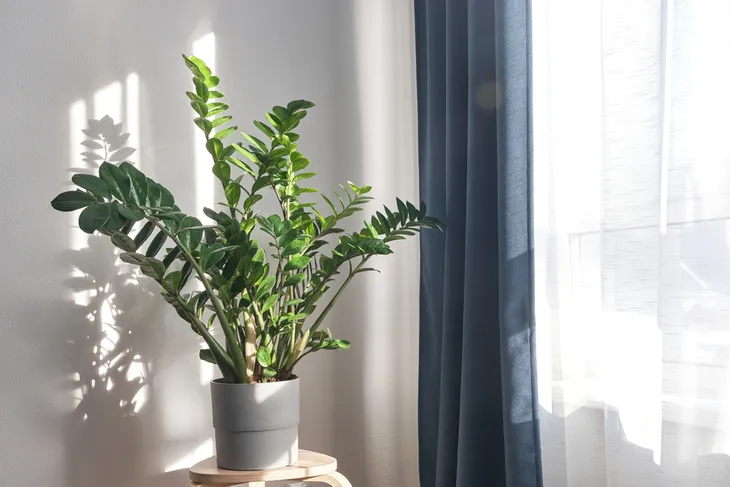 Shutterstock/Elena Shashkina
Shutterstock/Elena ShashkinaParlour Palm
If you’re looking for a plant with a tropical appearance, you may want to invest in the parlour palm. According to Anthony Smith, owner of Nursery Enterprises, the parlour plan is also especially good at filtering air and was even included in the NASA top-50 list.
The parlour palm is a great beginner houseplant since it can thrive without much maintenance. It can handle low light, cold temperatures and low humidity, making it a great option for those looking for a plant that doesn’t require much attention.
 Shutterstock/Wheatfieldstock
Shutterstock/Wheatfieldstock


